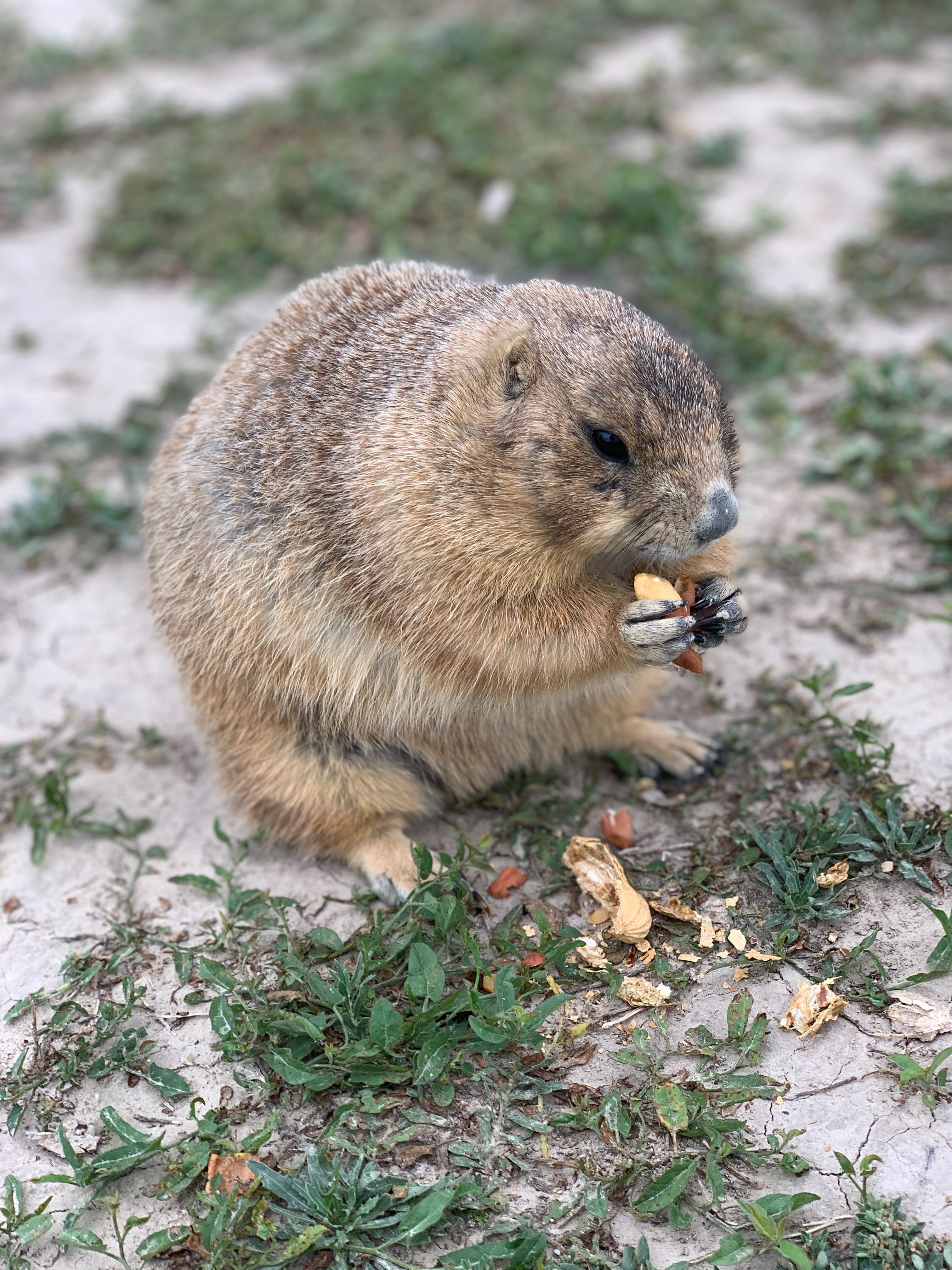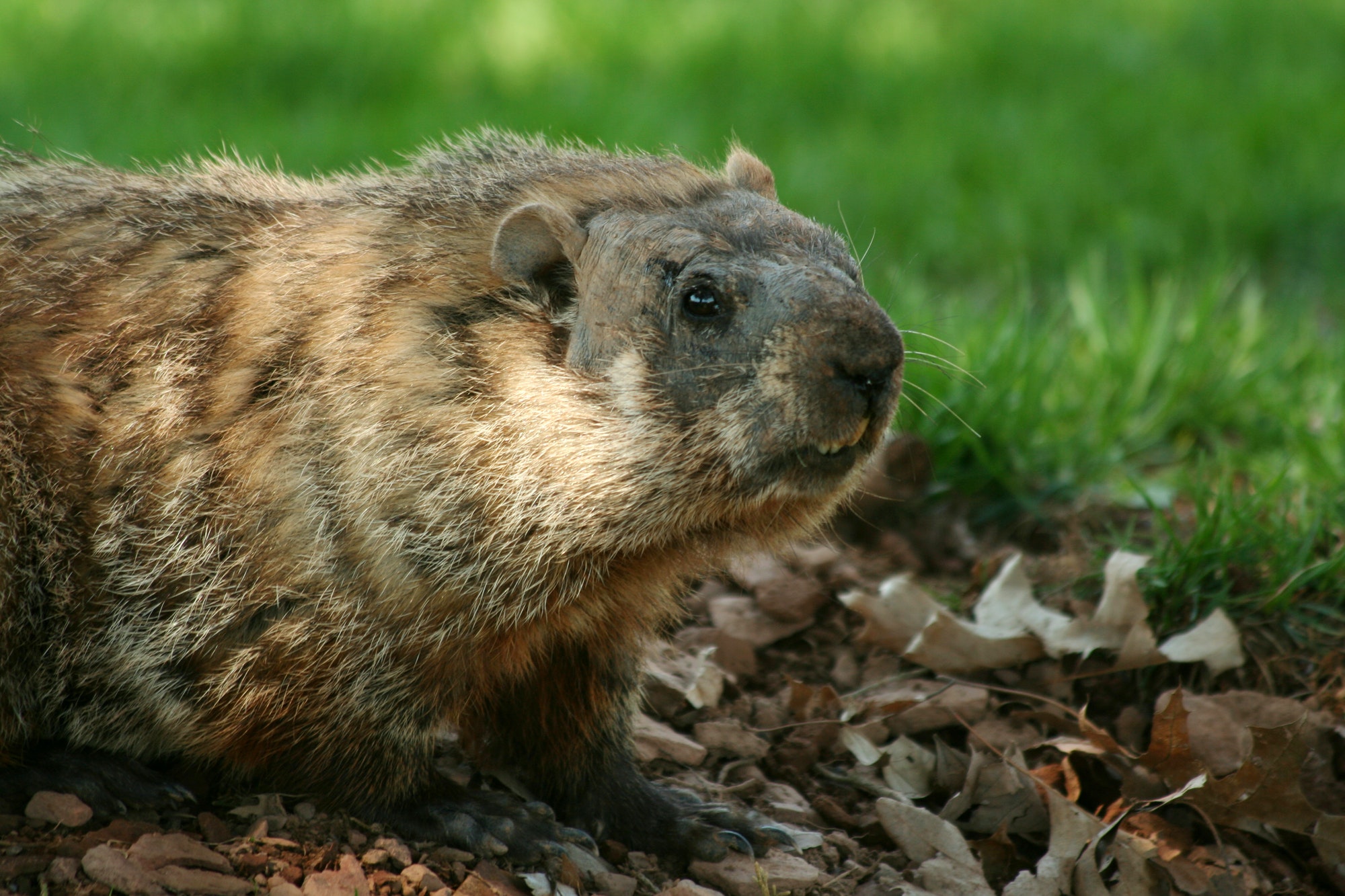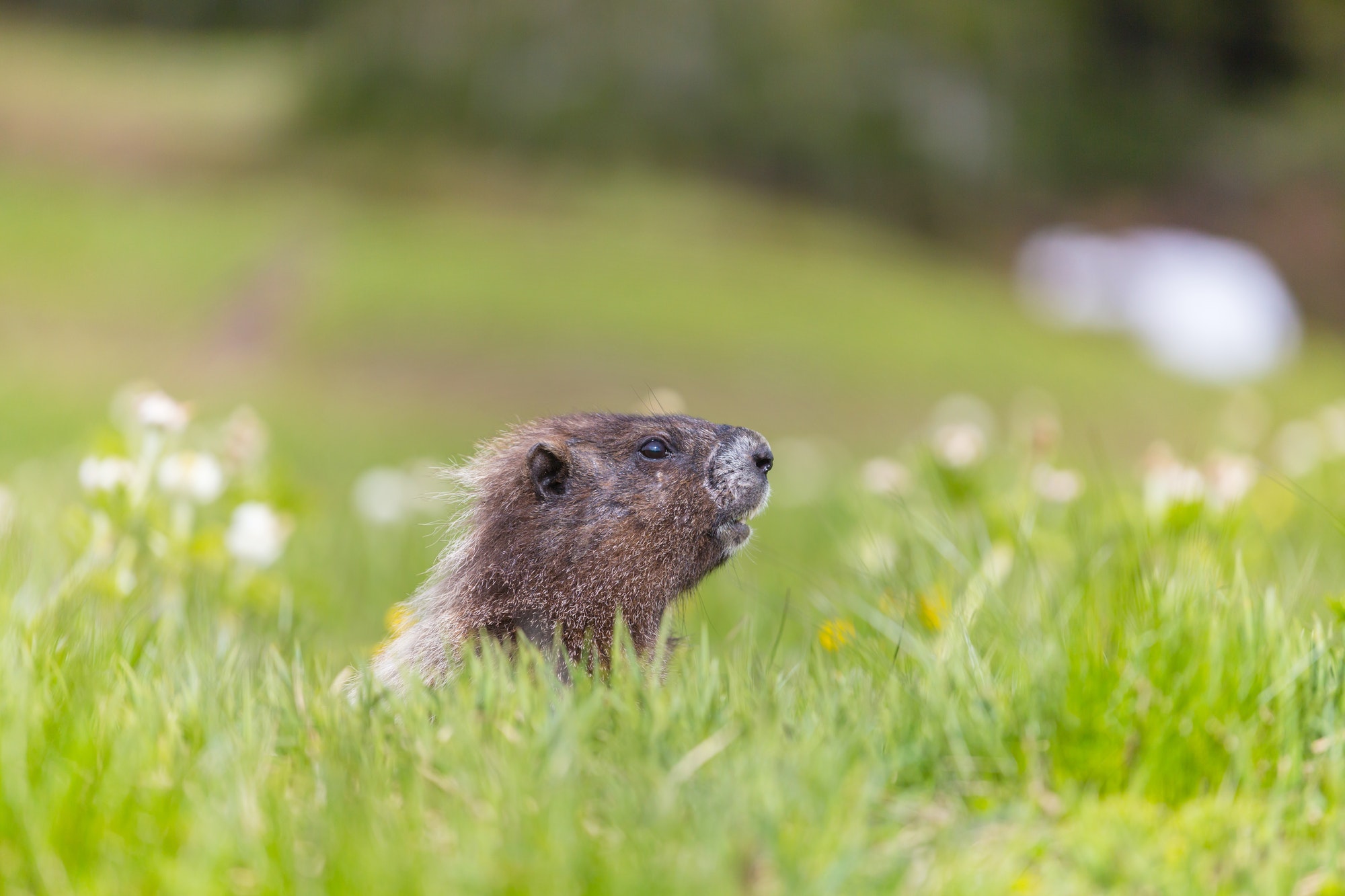What Are Woodchucks?
Every year on February 2, people look to a groundhog as it crawls out of its burrow. If the groundhog sees its shadow, there will be 6 more weeks of winter. If it doesn’t there will be an early spring. Woodchucks or groundhogs are known for helping people predict when spring will come, but what are they really, and what else do they do? Woodchucks are four-legged mammals and omnivores that live in underground tunnels.
Woodchucks are rodents in the family Sciuridae and the genus Marmota like other species of ground squirrels and marmots. There are many species of marmots including woodchucks, alpine marmots, Alaskan marmots, Himalayan marmots, Olympic marmots, etc… Woodchucks are native to the US and Canada.
They can be found in southern regions of Canada and Alaska (from Central Alaska to Labrador), southeastern regions of America in Alabama, Louisiana, Arkansas, and in the west from northern Idaho to southern regions of the Rocky Mountain range.
Woodchucks prefer to live in areas that have well drained soil and are near food sources such as forest edges, meadows, and fields. However, they can also be found in places are more populated with humans including gardens, farms, and on the side of roads.
Each family of woodchucks can have a habitat range (for homes, roaming, feeding, etc…) of 120 – 2640 feet. In an ideal habitat there may be 5 woodchucks per acre. Though woodchucks are often seen outside, they spend lots of time in their burrows/den as well.

Their den is made up of many tunnels (the tunnels are either interconnected or separate). These tunnels are 2 – 6 feet deep and are 8 – 60 feet long. There are at least two entrances to the den – a large main entrance which is a hole (at the end of the tunnel) with a diameter that is two times larger than the tunnel’s diameter and an auxiliary entrance – a smaller hole that is dug within the tunnel.
The main entrance of the den is marked with a mound of dirt located at the surface of the ground. Each tunnel is about 6 inches in diameter. The tunnels contain chambers/rooms that serve specific functions (one may used to sleep and another to defecate) and each chamber has a diameter of 15 inches. The den also has pathways (that lead from the tunnels to the chamber) which have diameters of 4 – 6 inches. The woodchucks will leave their burrows in the winter to hibernate.
Woodchucks are four-legged mammals with coarse yellow, brown and gray fur. They look like plump squirrels, with dark clawed paws and small round ears. The head and body of an adult woodchuck has a length of about 17 – 24 inches, and the tail is 7 – 9 inches long. They can weigh up to 13 pounds, are usually 8 – 10 pounds before hibernation, and only weigh 5 – 6 pounds after hibernation. They also have large front teeth on their upper and lower jaw (like a squirrel’s) that grate against each other when they eat which prevents the teeth from growing too long.
Woodchucks are mostly herbivores but they occasionally eat eggs, insects, and baby birds which makes them omnivores. Their diet mostly consists of vegetation including grass, clovers, ferns, dandelions, goldenrods, leaves, small branches, bark, fruits, vegetables, and sometimes alfalfa and soybeans. Woodchucks tend to look for food early in the morning and late in the afternoon during summer, but only go out in the afternoon during fall and winter.
They can consume up to 1.5 of food a day. Wild woodchucks will encounter predators that hunt them including raptors, snakes, coyotes, foxes, bobcats, raccoons, bears, and weasels. Humans also kill many woodchucks because many people consider them to be pests. They are especially unpopular with farmers because they eat lots of fruits and vegetables from gardens and farms, destroy crops, damage farm equipment, and livestock get injured from the mounds of dirt that are at the end of their tunnels.
In many US states, it is legal to kill woodchucks by shooting them or using traps. When in danger, woodchucks will try to escape by going into their burrows or running (though they’re not fast compared to their predators because their maximum speed is 10 mph). If they cannot escape, they will use their teeth and claws to defend themselves. Due to the large number of predators a woodchuck has, a wild woodchuck’s average lifespan is 3 years, but they can live up to 10 years if they’re held in captivity.

Woodchucks are solitary creatures and don’t interact with other woodchucks unless it’s their family or mating season. They are most active during the day. During midsummer they are more active early in the morning and late in the afternoon. During early spring and late summer they are most active in the middle of the day. When they’re outside, they spend most of their time feeding or sunbathing near their tunnels. Sometimes they will swim and climb. Adult groundhogs guard the area around their den.
In places that are heavily populated with woodchucks, areas for home and feeding become crowded and overlap which causes aggression and fights that result in social rankings among woodchucks – subordinates and dominants. These social rankings actually prevent fights because the subordinate woodchucks will avoid and yield to the dominants.
A family of woodchuck’s home ranges (the size of their tunnels, feeding area, sunbathing area, etc…) has a length of 37 – 805 feet. The quality of a habitat can decrease when the habitat is smaller, so in an ideal habitat, there can be 5 woodchucks per acre. Woodchucks also interact with each other in other ways. Young woodchucks and their parents have greeting rituals where they push their snouts against each other. Sounds such as “purrs”, “grunts”, and “chucks” can be released to communicate. When in danger, they whistle to warn others, and retreat into tunnels as fast as they can. Adult woodchucks chatter and grate their teeth when they fight with others. They have glands in their mouth that can send out a substance that has a bad smell, and can also use their glands to react to other chemical signals.
Like many other mammals, woodchucks hibernate in the winter. They spend summers eating lots of food to store fat in their body for fall and winter. Then they’ll make separate burrows (away from their tunnels) for hibernating in a nearby wooded area. These burrows are blocked with soil. Woodchucks start hibernating in late September or early October and emerge from their burrows from late February to early, mid or late March.
The length of the hibernation differs depending on what region the woodchuck lives and its gender. Male woodchucks hibernate for about 105 days which is shorter than a female woodchuck’s hibernation time. During hibernation their body temperature can drop to down to 37 degrees, their heart rate slows down to about 4 -5 beats per minute, and breathing slows to 2 – 16 breaths per minutes. After hibernating they will lose 30 – 40 percent of their body weight.
Soon after hibernating, woodchucks begin to mate. They can mate from late February to April, though the time they spend mating varies depending on the regions they live in. Male woodchucks stop hibernating first, and start looking for other female woodchucks. Male woodchucks mate with many females, but female woodchucks only mate with one male. After breeding, the female and male no longer interact with each other, and the mother takes care of young woodchucks alone.
Females can give birth from 2 – 9 woodchucks, but usually 4 – 5 woodchucks are born. They only give birth to one litter per year. The young woodchucks are born in an underground nest with a congestion period of 30 – 33 days. They are typically born from late April to early June. Young woodchucks are hairless pink, and weigh 1 – 1.5 ounces. They open their eyes and start going outside of their tunnels (but return to the burrows when their mother isn’t around) when they’re 28 days old. When they’re about 4 – 6 weeks old, they stop feeding on their mother’s milk, and she starts feeding them vegetation by bringing food to the burrow. In July and August, they start to leave the burrow and build their own new burrows nearby or in other unoccupied area. Young woodchucks start to breed when they’re two years old.
Though woodchucks are pests, they are also important intermediaries in the food chain and their ecosystems because they are omnivores and are also eaten by a number of predators. If woodchucks die out in an area they were once native to, predators may have more trouble finding food and insect populations can drastically increase (and a large amount of insects can ruin crops).
Their dens that are made from a number of long tunnels may also help soils aerate and recycle nutrients. Their tunnels can also be reused by other animals like foxes, raccoons, skunks, and opossums. Their tunnels also help with flooding because the water can infiltrate through the burrows and get absorbed in the soil instead of running over the land. They also create compost in the soil by bringing plants, grasses, feces, and other things that can increase the soil’s amount of nutrients.
Because of their importance to the environment, one should not get rid of woodchucks by killing them. To prevent woodchucks from burrowing in your house, cover up all cracks and crevices with caulk, and cover openings (like chimneys) with mesh. If they already have built burrows in your home, call professional pest control agencies.
To prevent woodchucks from entering your garden or farm, install a fence around the area you want to protect. The fence should be 3 – 4 tall (from the surface of the ground), and be made from chicken or welded wire with a mesh size of 3 by 3 inches or less. Add 12 – 18 inches of unsecured fencing at the top(, so the woodchuck can’t climb on it due to its unsteadiness) and a buried or pinned L – footer base or an electric fence that is 4 inches off the ground and 6 feet in front (to prevent digging). If the woodchucks are building tunnels under you land and are disturbing crops or causing injuries, you should get them to leave using the following methods.
First of all, you have to determine if it’s the right time to get them to leave. You can proceed to the following steps if it’s anywhere between early July to late September. (If you chase them out earlier, it’s likely that there will be young woodchucks in the burrow that are dependent on their mother and aren’t used to finding food outside yet. If you decide to try to chase them out after September they will already have found a hibernation burrow and will start to settle there or may have already started to hibernate.) You can then start to close the burrows. Loosely block the entrances of the tunnels with grass clippings or newspaper and keep an eye on the material you used to block the tunnels for the next 5 days. If the material is not moved, the burrows are probably vacant and you should permanently close them.
You can do this by placing heavy-gauge welded fencing wire (which has squares that are 3 inches long at most) over the entrances. Cut the wire into 3 foot by 3 foot sections and bury them against the entrance holes. The wire should be 1 foot deep into the ground. You can also use landscape staples to pin the wire down if needed. If burrow is occupied, throw the vegetation from the entrance away and dig a bit of the entrances out. Then, put some non-toxic strong smelling material in the entrance such as used cat litter and loosely block the entrance so that the smell stays in the burrow. You can also cut down vegetation on areas surrounding the burrow (since woodchucks like to roam in high levels of vegetation) to create discomfort for the woodchucks. Monitor the burrows for a few more days and if they’re vacant, you can permanently block them.
Woodchucks are herbivores and mammals that live in tunnels and hibernate. They’re known because of Groundhog Day and for being pests. Though they can damage crops and farm equipment, they are an important part of the ecosystems they populate, and can enrich the soil (by allowing water to run through their tunnels and aerate the soil with their digging), so if you want to rid your land of a woodchuck you should remove it in a way that won’t put its safety at risk.
Author: Chi Le
Work Cited
- “Groundhogs.” Pestworld.org. National Pest Management Association. 7 August 2020 https://www.pestworld.org/pest-guide/nuisance-wildlife/groundhogs/.
- “Groundhog (Woodchuck).” Fish and Wildlife/Wildlife Resources/Nuisance Wildlife/ Groundhog (Woodchuck). Indiana Department of Natural Resources. 12 August 2020 https://www.in.gov/dnr/fishwild/5694.htm.
- “Mammals of the Adirondacks: Woodchuck (Marmota monax).” Adirondacks Forever Wild. 2019. 12 August 2020 https://wildadirondacks.org/adirondack-mammals-woodchuck-marmota-monax.html.
- Rajewski, Genevieve. “Five Things You Didn’t Know About Groundhogs.” TuftsNow. 28 January 2019. Tufts University. 7 August 2020 https://now.tufts.edu/articles/five-things-you-didn-t-know-about-groundhogs.
- Saunders, D.A. “Groundhog.” Adirondack Ecological Center. 1988. SUNY College of Environmental Science and Forestry. 10 August 2020 https://www.esf.edu/aec/adks/mammals/woodchuck.htm
- Silvesto, Roger D. “10 Things You May Not Know About Groundhogs.” National Wildlife Federation Blog. 13 January 2011. National Wildlife Federation. 9 August 2020 https://blog.nwf.org/2011/01/10-things-you-may-not-know-about-groundhogs
- Whalen, Patrick G. “Why Pesky Moles and Groundhogs Are Actually Beneficial.” Off The Grid News. Off The Grid News. 14 August 2020 https://www.offthegridnews.com/
- “What to Do about Woodchucks.” The Human Society. The Humane Society of the United States. 14 August 2020 https://www.humanesociety.org/resources/what-do-about-woodchucks.
To an English person, it will seem like simplified English, as a skeptical Cambridge friend of mine told me what Occidental is. The European languages are members of the same family. Their separate existence is a myth. For science, music, sport, etc, Europe uses the same vocabulary.








